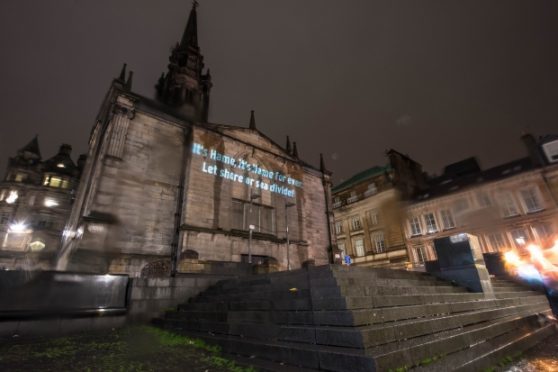A poem penned by a famous Moray wordsmith will be beamed across some of Scotland’s most famous landmarks to celebrate St Andrew’s Day.
Mary Symon was born in Dufftown in 1863 and spent most of her life in the area, crafting some of the country’s best-loved poetry.
Moving words from one of her pieces, entitled Hame (St Andrew’s Day under the Southern Cross), will now be projected onto legendary buildings as the nation prepares to mark Scotland’s national day on Monday.
Key lines are being shone onto the Kelvingrove Art Gallery in Glasgow, the Schiehallion mountain in Perthshire, Scone Palace, Edinburgh’s Usher Hall and Tron Kirk, and Glasgow Science Centre.
Hame (St Andrew’s Day under the Southern Cross), written in Doric, describes the emotions of First World War servicemen abroad as their thoughts turn towards their homes.
She refers to “the green haughs yont the Spey” and speaks of the bond felt between Scots whether their feet “tread Libyan deserts” or “press the wattle’s bloom”.
The Press and Journal’s Doric columnist Robbie Shepherd said he was delighted the Moray writer is receiving such public recognition.
“Mary Symon had a mastery of Doric, and a great grasp of how to use it to its best advantage,” he said.
“That was shown most strongly in her war poems, they were straight from the heart and encompassed more than any reports from the battlefields could.
“At the time of the First World War, and in the years after, folk were desperate to seek out her work.
“I’m just delighted her poetry is getting prominence like this. It’s great for the whole north-east.”
Mary Symon was born in Dufftown in September 1863, the elder of two daughters of John Symon and Isabella Duncan.
She went to Mortlach Public School, and later graduated from St Andrew’s University.
She began writing poetry at the age of 11, but it was not until she reached her 50s that her war poetry became popular with readers.
One piece, entitled A Whiff O’ Hame’, was included in a Christmas book sent to the troops in 1916 to boost their spirits.
She died in Dufftown in May 1938, at the age of 74 and was buried at the Mortlach Old Church.
